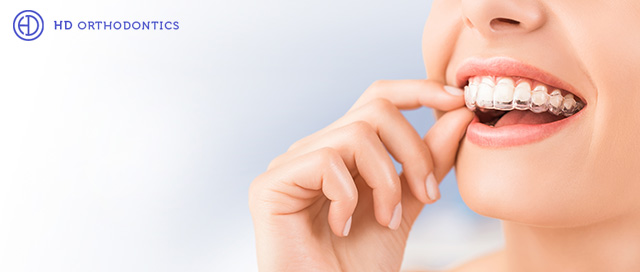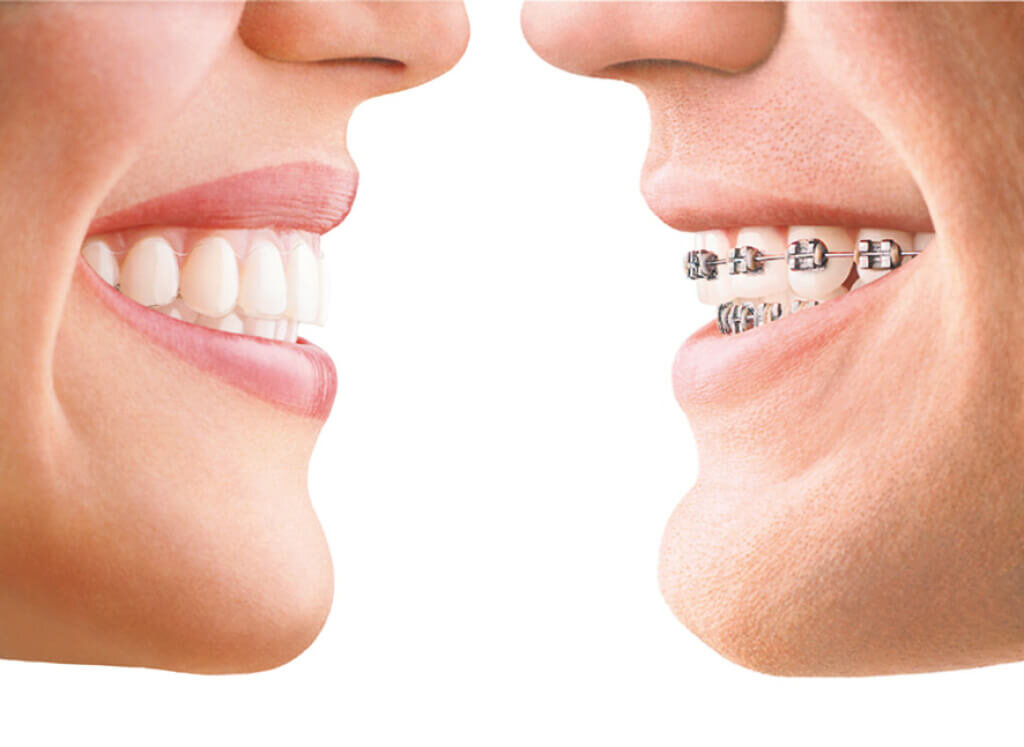Invisalign vs. Traditional Dental braces: Which Choice Is Right for You?
When considering orthodontic treatment, the option in between Invisalign and standard braces offers a number of vital aspects that merit mindful examination. Invisalign offers a very discreet choice with removable aligners, while typical braces give a much more visible yet effective option for severe misalignment. Each alternative includes distinct advantages and drawbacks associated to aesthetics, comfort, therapy duration, and expense. Understanding these nuances is crucial for making an educated decision that straightens with your individual preferences and way of life. The inquiry remains: which choice will ideal fulfill your orthodontic needs and expectations?
Review of Therapy Options

In contrast, conventional dental braces include steel braces and wires that are bound to the teeth. This method uses continuous pressure with time to achieve positioning. While reliable for complex orthodontic problems, standard dental braces require regular sees for adjustments and can present obstacles in maintaining oral hygiene because of the problem of cleaning up about wires and brackets.
Both options have their merits, and the selection typically pivots on specific oral problems, lifestyle choices, and patient compliance. Ultimately, seeking advice from an orthodontic specialist is crucial for figuring out the most appropriate therapy plan tailored to individual needs. Understanding the nuances of each alternative can significantly affect the total success of orthodontic treatment.
Visual Considerations
A substantial factor influencing the option between Invisalign and typical braces is the visual charm each treatment supplies. Invisalign aligners are crafted from clear plastic, making them essentially invisible when put on.
On the other hand, typical dental braces contain steel brackets and cords, which can be much more recognizable. While developments in orthodontic technology have actually brought about the advancement of smaller sized braces and colored elastics, standard braces still preserve an even more conspicuous profile. For some individuals, the presence of dental braces may deter them from looking for essential therapy.
Eventually, the selection between Invisalign and typical dental braces may pivot on personal preferences regarding visual appeals. Individuals that focus on discernment typically favor Invisalign, while those that are much less worried about visibility may choose standard dental braces. Recognizing the visual implications of each option is important for making an educated choice that straightens with one's way of living and choices.
Convenience and Convenience

In regards to benefit, Invisalign aligners are removable, allowing individuals to enjoy their preferred foods without constraint and maintain optimal oral health. Cleaning and flossing are streamlined, as the aligners can be obtained throughout these regimens, whereas traditional braces require cautious navigating around braces and cables.
In addition, Invisalign's modern system permits fewer orthodontic check outs. Individuals normally get multiple sets of aligners simultaneously, which can simplify the therapy procedure and minimize time spent in the orthodontist's chair. On the other hand, typical dental braces necessitate regular changes, making them much less practical for those with busy timetables. Invisalign. Generally, the comfort and ease of Invisalign make it an enticing option for numerous people seeking orthodontic treatment.
Therapy Duration and Performance
While both Invisalign and conventional dental braces are reliable in dealing with dental misalignments, the period of treatment can differ considerably in between both alternatives. Usually, Invisalign therapy can take anywhere from 12 to 18 months, depending on the intricacy of the instance. The clear aligners work by progressively shifting teeth right into their preferred positions, and routine follow-ups with an orthodontist aid guarantee progression remains on the right track.
On the other hand, traditional braces usually need a longer commitment, generally ranging from 18 months to three years. weblink This results from their set nature and the use of brackets and wires, which can be much more reliable for complex cases and serious misalignments (Invisalign). The therapy efficiency of traditional dental braces is well-documented, as they enable precise changes and greater control over tooth motion
Inevitably, the option in between Invisalign and conventional dental braces may depend upon both the awaited treatment period and the certain oral concerns available. Consulting with an orthodontist is essential, as they can offer tailored suggestions based on private requirements, making sure the selected technique lines up with desired outcomes and timeframes.
Cost Contrast and Insurance Coverage Options
Cost plays a significant duty in the decision-making process for individuals considering orthodontic therapy, whether deciding for Invisalign or conventional braces. Generally, the price of Invisalign varieties from $3,000 to $8,000, while conventional dental braces commonly set you back between $2,000 see post and $6,000. Variables influencing these expenses include the intricacy of the instance, the period of treatment, and geographical place.
Insurance coverage can dramatically affect out-of-pocket expenses. Several dental insurance coverage plans give partial protection for orthodontic treatments, however the specifics can vary commonly. It is essential for clients to evaluate their insurance plan to figure out the extent of protection for either choice. Generally, traditional braces might be more often covered by insurance policy plans contrasted to Invisalign, which some insurance providers classify as an aesthetic procedure.
Furthermore, numerous orthodontic techniques offer flexible repayment strategies, making both therapy alternatives extra available. Individuals must make inquiries about potential financing options and discount rates for in advance repayments. Assessing the overall expense, including insurance coverage advantages and layaway plan, is vital for making a notified choice that aligns with both aesthetic choices and budget considerations.

Final Thought
In summary, the selection between Invisalign and traditional dental braces rests on multiple variables, including visual preferences, convenience, treatment period, and cost. Invisalign supplies a discreet, detachable choice that facilitates dental hygiene and nutritional flexibility, while typical braces might be better for complex oral issues and commonly come at a lower rate point. Eventually, consultation with an orthodontist is necessary to assess private conditions and identify one of the most appropriate treatment choice for attaining optimal dental positioning.
When taking into consideration orthodontic treatment, the option in between Invisalign and traditional braces provides numerous essential aspects that warrant careful evaluation.Comparing Invisalign and standard dental braces discloses distinct treatment choices for orthodontic modification.While both Invisalign and typical dental braces are effective in correcting dental misalignments, the duration of treatment can differ considerably between the two choices.Expense plays a substantial role in the decision-making process for individuals considering orthodontic treatment, whether opting for Invisalign or traditional braces.In recap, the choice between Invisalign and conventional braces hinges on numerous variables, consisting of visual choices, comfort, treatment period, and price.
Comments on “The Price of Invisalign: Understanding the Investment in Your Smile”